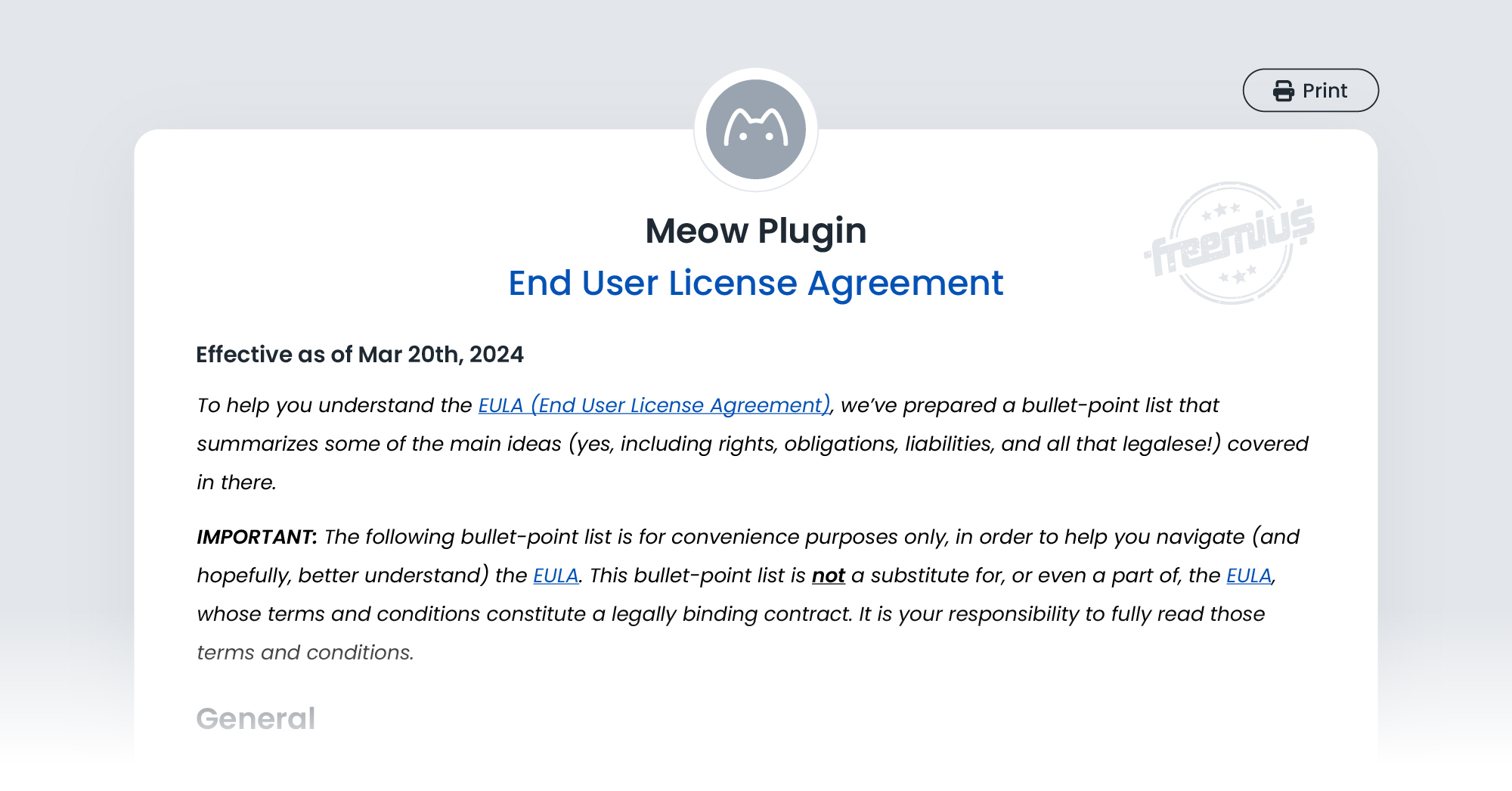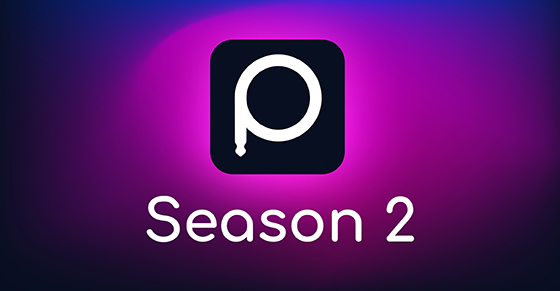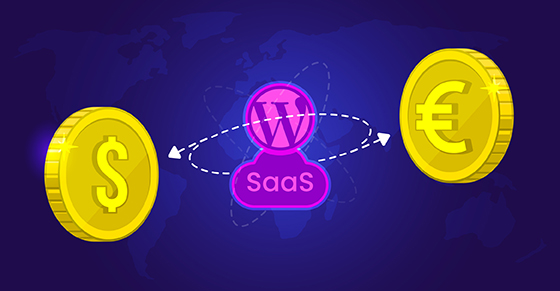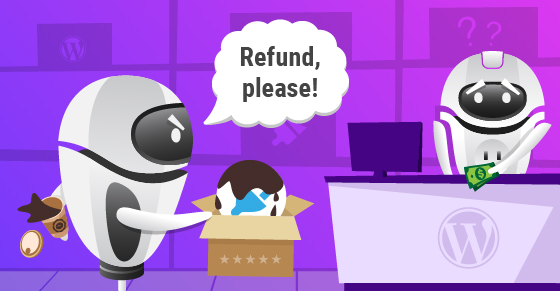End-user license agreements (EULAs) are the guardians of a software creator’s intellectual property. They serve as clear declarations of what users can and cannot do with your software and define the rules for practices like refund policies, subscriptions, trials, and discounts.
In short, they safeguard a product maker’s livelihood against undue disputes and worst-case scenarios.
That said, many software creators who are new to product development may be confused by legal terminology, legalities across different countries, and what clauses/sub-clauses to include. Not to mention how to create an EULA from scratch.
With firsthand insights from Freemius founder and CEO Vova Feldman, this article demystifies EULA jargon and clarifies the clauses and sub-clauses that product makers must include in their EULAs. We also share practical tips to help you get started on creating one 📝
Before we get going, heads up! This article is not legal advice 😅 Legal stuff can get pretty complex, and it changes from place to place, not to mention over time. If you’re facing a situation where the details really matter, it’s a smart move to chat with a legal pro who knows their stuff.
We hope you find the read helpful and interesting, but please don’t rely on it as the final word on the law.
Let’s start with the groundwork:
What Is an EULA?
An EULA is essentially the digital handshake (or rulebook 🤔) that defines the relationship between software creators → their products → and end users. It articulates each party’s rights, responsibilities, and restrictions related to usage, and needs to be accepted by the customer before the product can be used.

Even though more than 50% of users take less than 8 seconds to read EULAs, you, as the seller, need to put in the time to ensure all of your bases are covered.
What Software Doesn’t Need an EULA?
EULAs are not used in the SaaS ecosystem. For SaaS, Terms of Service govern the legalities between end users and product owners, establishing the product services that sellers agree to offer and how they expect customers to use them.
What Software Does Need an EULA?
EULAs are for distributed software like WordPress plugins and themes, desktop apps, and — we’re showing our age here — relics from a bygone era like CD-ROMs 👴🏼

Simply put, EULAs are typically for software that is installed on a device and has an impact on that device. As mentioned, since users have access to the software itself, EULAs must also establish terms of usage such as whether a license can be resold, etc.
What Are the Risks of Not Having an EULA?
It’s far riskier to install software on a device than it is to use software that’s maintained in the cloud (like SaaS).
Even small, unassuming plugins have the potential to cause unintentional yet catastrophic damage.
An extreme example: One of your customers runs an eCommerce store that processes millions of dollars a week. They install your plugin and it breaks their website, leading to zero sales for a day (or three).
Who is liable for these losses?
If you’ve written a specific clause related to a ‘website-breaking, worst-case scenario’ into your EULA, not you.
By stating that you are not liable for any losses caused by issues your plugin causes (like site downtime and sales losses), your ‘worst case’ will be refunding what the customer paid for the product. Not so bad, right?
Vova elaborates:
The primary purpose of an end-user license agreement is to set in stone what happens when sh*t hits the fan 💩 It’s a legally binding contract between you — the software provider — and the end user to protect yourself from exposure, liabilities, getting sued, and so on.

What Clauses and Sub-Clauses Should EULAs Include?
While it’s impossible to list every clause and sub-clause here — this is an article, not a novel 😁 — we’ve listed the broad general clauses, along with their high-level objectives, to serve as a starting point for creating your EULA.
What this section does not contain, however, are the many (many) use cases that a software creator will be faced with as their business grows.
To give you an idea of what could be in store, we’ve released an article examining
several EULA examples — along with specific use cases — that Freemius and our makers have experienced over the years.
Moving on to the common clauses/sub-clauses:
Definitions and Interpretation Clause
- Clear explanations of key terms and phrases used throughout the agreement to reduce ambiguity.
- The clause should ensure that both the software provider and the user have a mutual understanding of the terminology, such as definitions for ‘Software’, ‘License,’ ‘User’, ‘Intellectual Property Rights,’ and any other significant terms specific to the software product or service being provided.
Ordering, Refund Policy, and Trials Clause
- The terms under which users can obtain refunds or cancel their subscriptions, specifying any deadlines or conditions that apply.
- Clarifies the terms of trial use, such as duration, limitations on functionality, and conversion to full versions.
Check out this refund-related EULA excerpt, generated by Freemius for Blocksy, one of our makers:
If You change Your mind about your Purchase and have not yet downloaded the paid Product, then, upon Your request within fourteen (14) days from the Purchase date, we will issue a full refund of the Purchase price. For the avoidance of doubt, the following do not constitute a Purchase that would entitle you to another refund right:
- upgrading an existing Purchase – whether you are upgrading within the same plan (for example, purchasing additional license activations), upgrading from one plan to another plan (for example, from a ‘Starter’ account to a ‘Professional’ account), or upgrading to a different billing cycle (for example, from ‘monthly’ to ‘annual’); or
- purchasing a new additional license under a plan.
Licenses and Restrictions Clause
- Specifies what a user can and cannot do with the software.
- Defines the scope of the license (e.g., non-exclusive, non-transferable, non-assignable), usage rights (such as installation, and configurations), and restrictions (including prohibitions on reverse engineering, redistribution, and modification).
- Crucial for protecting the software creator’s intellectual property while providing users with clear guidelines on how they can legally use the software.
Payment and Pricing Clause
- Ensures transparency and clarity around all financial transactions related to the software’s use.
- Lists the software’s pricing structure, including any subscription fees, one-time purchase costs, or tiered pricing models.
- Clearly outlines payment terms, acceptable payment methods, and any taxes or additional fees.
Other important clauses include:
- conditions for price changes (such as those related to Renewal Discounts).
- how changing plans affects the renewal price.
- how users will be notified about the above changes.
- the policy for handling overdue payments.
Product Support and Maintenance Clause
- The terms of how updates and technical support will be implemented.
- Defines the duration of support, the nature of maintenance services offered (such as security patches, troubleshooting, updates, upgrades, bug fixes, etc.), and any conditions or limitations on these services.
Additionally, it should state the factors that make users ineligible for product support. The below excerpt specifically applies to open-source software, where customers can modify the code.
(i) You will not be eligible for support and maintenance services in the event You modify the Product, nor following termination or cancellation of Your Purchase; and (ii) no undertaking is made by Vendor that it will support or maintain the Product (for example, if the Vendor ceases to do business or retires the Product), even if You have purchased a Lifetime License.
Product Features Clause
- Details responsibilities and restrictions related to features, such as availability, operability, blocking, and deactivation.
- States what happens when new/modified features are implemented for the product, as well as which features are disabled upon termination:
…following termination or cancellation of Your Purchase or Your Paid Trial, or expiration of Your Free Trial without a payment method, some or all of the Product’s ‘paid’ features may be disabled by the Vendor, and You acknowledge that this may have the effect of disabling or rendering unusable the entire Product itself.
Ownership Clause
- Explains that the software and all associated intellectual property rights remain with the software creator or licensor by defining:
- the terms related to product ideas/feedback provided by the user and the seller’s ‘right of use’ thereof
- that the license granted is not a transfer of ownership rights, emphasizing that all copies of the software, in whole or in part, are subject to the same ownership conditions
- the specifics of IP rights, such as authorship rights, personal rights, and architectural, building, and location rights.
When portions or the entirety of your code are licensed under the GPL — as is common with WordPress plugins and themes — the situation becomes significantly more complex and nuanced.
The GPL differs from traditional licenses by not defining code ownership but granting users freedoms to use, modify, and share the software, with conditions to ensure these freedoms for all. Crucially, copyright stays with the original creators, highlighting the GPL’s role in promoting innovation while respecting creator rights.
Navigating the intricacies of compliance with open-source licenses like the GPL, while simultaneously safeguarding your intellectual property, requires a nuanced approach. It is advisable to engage with a law firm that specializes in the open-source domain and has a demonstrated track record of success.
Term and Termination Clause
- Explains the agreement’s duration and the conditions under which it can be terminated.
- Specifies the initial term of the license, any conditions for renewal, and circumstances that could lead to termination, such as breaches of the agreement.
- Outlines the procedure and accompanying obligations for either party upon termination, such as the requirement to cease using the software and features, and the terms of refunds or payments of outstanding amounts.
Disclaimer of Warranties Clause
- States that the software is provided ‘as is’ and ‘available’ without warranty of any kind, either expressed or implied.
- Disclaims all warranties, including but not limited to implied warranties of merchantability, satisfactory quality, fitness for a particular purpose, etc.
- Explains that the software creator does not warrant the software’s performance or compatibility with other systems, or that it will meet the user’s requirements.
Limitation of Liability Clause
- Protects the software creator from financial liabilities resulting from claims related to the software’s use.
- States that the software creator or licensor’s liability is limited to the maximum extent permitted by law.
- Clarifies that the creator will not be liable for any indirect, special, incidental, or consequential damages arising out of the use or inability to use the software. This includes, but is not limited to, damages for lost profits, data loss, or business interruption.
Indemnification Clause
- Outlines scenarios where the user must compensate the software creator for any losses, damages, or expenses resulting from misuse of the software or violation of the EULA terms.
- Defines instances under which indemnification is applicable, the process for claiming indemnification, and any limitations or exclusions.
Governing Law Clause
- Specifies the jurisdiction under which the EULA is interpreted and enforced.
- Names the specific state, country, or legal system that will govern the terms of the agreement, ensuring both parties know which jurisdiction laws apply to any disputes or legal issues arising from the software use.
- Addresses legal uncertainties and provides a clear path for legal recourse if necessary.
Dispute Resolution Clause
- Provides a step-by-step process for disputes, starting with informal negotiations, followed by formal mediation or arbitration, and then the last resort: litigation.
- Names the locations for disputes to be resolved and whether arbitration is binding.
- Note: It’s a good practice to encourage resolving issues out of court to save both parties time and legal expenses, as well as to provide a clear roadmap for addressing disagreements.
Miscellaneous Clause
- Covers various legal and administrative provisions not covered in other EULA sections. This can include clauses on:
- Severability: How the rest of the EULA is affected if a part is found to be unenforceable
- Assignment: Restrictions on transferring the EULA rights and obligations
- Entire agreement: stating the EULA is the complete agreement between the parties
- Amendment: how the EULA can be modified
Now that the essential groundwork and key (albeit general) EULA clauses and sub-clauses have been covered, let’s move on to:
How to Create EULAs for Software Products
There are various routes software product makers can take in the initial drafting phases, and one of the first questions you’ll need to tackle is:
Should You Draft an EULA With a Law Firm or Use a Generic Template?
‘Most countries have established, leading law firms with lawyers from a variety of backgrounds catering to the nuances of the tech space. But just like software solopreneurs and SMBs, these firms won’t have offices/subsidiaries in every country and will therefore be unable to ensure strict compliance with each country a product maker is selling in,’ Vova explains.
That said, there are benefits to enlisting the help of tech-centric law firms. Big companies such as these aren’t going to waste time and resources on drafting EULAs from scratch.
They typically have libraries of templates that are gradually improved over time, either through new legal cases or through research into legal changes.
These templates are usually:
- developed from a wealth of use cases
- cover the major clauses and sub-clauses related to the specific product market/niche
- have various branching options that can be adjusted based on the needs of the client and their product(s)
They are logically better than what a product maker could initially create using a generic template they found online.
The downside?
Law firms can be costly and, while knowledgeable, may not always be fully attuned to the latest trends in software development or the specific challenges facing smaller entrepreneurs in the tech space.
Our two cents:
If you can afford a law firm, then we say: by all means do it! The accrued knowledge and professional expertise will remove most of the legal admin from your shoulders.
Before you commit, however, consult with peers and research to ensure the firm you select has a successful track record and is respected in the tech and software ecosystems.
But, if you’re budget-conscious, generic templates can work (as a starter), but we recommend augmenting them with other tools and methods (which we explore below).
Subscribe and grab a free copy to start Mastering SEO on the WordPress.org Repository
Make the WordPress.org search algorithm work for you with actionable tips to rank your plugin higher.

Should Software Creators Use AI or Automation Tools To Create EULAs?
The mind-blowing progression of AI has led to automated solutions tailored specifically for the legal sector. If you’re looking for help with basic legal language and initial drafting, these tools can get you started.
You can also search for GPTs that have been trained specifically for EULAs — such as Open EULA or EULA Bro — to help you get the jargon right or to surface red flags in your EULA’s first few drafts.

While these tools are helpful as a start, we don’t advise relying too heavily on AI and automation as your business grows. Eventually, your company will reach a certain level of maturity, accumulating years of use cases (and edge cases 🤷). When this time comes, we recommend seeking legal assistance because (as Vova warns):
The more you have, the more you stand to lose.
And if your EULAs aren’t periodically updated and watertight, you may end up on the losing side more often than you should.
However, if legal firms and GPTs don’t gel with the path you want to take right now, why not…
Reach Out to Your Software Product-Making Peers
What’s a network if you can’t leverage it from time to time?
Seek out someone in your space who sells a similar product and has worked with a firm to draft their EULA. Ask if you can use it 🙏
In our opinion, this is the easiest and most practical way to get started.
Many software creators and indie devs simply don’t have the time or money to work with lawyers at the beginning of their entrepreneurial journeys.
That said, it’s not a matter of cut and paste 😅
‘You can’t simply take an existing EULA and change the titles and product names. There’s a risk of copyright issues (even though exposure is small for solopreneurs and SMBs) and it’s the wise course of action to get things right from the beginning, instead of having to patch up holes down the line.’
Suppose you’re still unsure about making the adjustments yourself but you have the time to research competitors’ EULAs for inspiration. In that case, we recommend biting the financial bullet and working with a lawyer to apply your research while providing them with your competitors’ references to set better expectations.
Is the above leaving your head in a spin? There’s another option…
Freemius Automatically Generates EULAs for Our Makers
Vova elaborates:
To remove much of the legwork, we generate EULAs for our makers based on their specific product configurations, such as refund policies, plan settings, free trials, lifetime licenses, subscriptions, etc.
The document comes styled as an official legal agreement (which it is), branded with the maker’s product icon, and with an easy option to print it:
To make things easier, we’ve included ‘shortcuts’ that allow our makers to link directly to specific sections in the EULA:
- Subscriptions terms summary:
https://freemius.com/terms/<productID>/<productSlug>/#subscriptions_summary - Refund policy summary:
https://freemius.com/terms/<productID>/<productSlug>/#refund_policy_summary - Full refund policy:
https://freemius.com/terms/<productID>/<productSlug>/#refund_policy
For example, if a customer contacts a maker asking to refund a renewal, you can tell them they agreed to the EULA upon purchase and renewal refunds are not covered, while linking directly to the subscriptions terms summary:
https://freemius.com/terms/<productID>/<productSlug>/#subscriptions_summary
With the drafting over and the EULA published, can you guess what’s equally as non-negotiable for software products?
How and Why You Need to Continue Updating Your EULA
Over the years, our makers community has accumulated a wealth of use cases, and we’ve collected and recorded them so their peers aren’t exposed to the same.
You could even say we’ve got a library of specific scenarios — both use case and edge case — to rival some legal firms 😉
But this ‘use case’ knowledge is wasted if a software creator neglects to revise and adjust their EULAs over time. It (re)exposes them to issues and disputes that have already surfaced, which is — in all honesty — sloppy.
We are huge advocates for updating EULAs incrementally — it not only increases the protection for the software creator as they scale, but other sellers can take the learnings and apply them to their EULAs and improve them.
There are also ways to expedite updates and amendments if and when needed…
Bake-In Flexibility With EULA Boilerplate Clauses
A boilerplate clause is a standardized section that uses generic language to address common legal points. They typically cover areas like dispute resolution, termination conditions, terms of service, and contract amendments.
Amendments — this is the point of interest here.
By including a boilerplate clause that gives the software creator ‘right of revision’ to an EULA, makers can bake in a measure of flexibility for unforeseen changes or conflicts.
Let’s say a product is using a third-party API (such as a GPT) behind the scenes for some trivial action. For whatever reason, the product maker overlooks the fact they need to inform end-users that data is being sent to a third party.
Now, imagine a rather scatterbrained European customer mistakenly sends personal information (like credit card details) using the product. Realistically, if there’s no protection in the EULA, the user can sue the software creator for sharing personal information with a third party, which is against GDPR.
But, if the software creator spots this EULA blind spot and has a boilerplate clause that allows for revisions, they can address it before any issues arise.
And even if the flaw is surfaced by an end-user before the seller’s aware of it, they can still make improvements to the EULA after the fact so that it never happens again.
The Stronger the EULA, the Safer the Product and Its Maker
Software product EULAs stand between you and undue refunds, messy disputes, and worst-case scenarios. Commit to revising it consistently, and you commit to safeguarding the product and business you’ve poured your blood, sweat, and tears into.
We get that legal jargon, clause complexities, and drafting options can be overwhelming and hard to navigate. We’re happy to chat, answer any questions, and share how Freemius can help lighten your EULA load.
Reach out here or drop us a DM on X.








